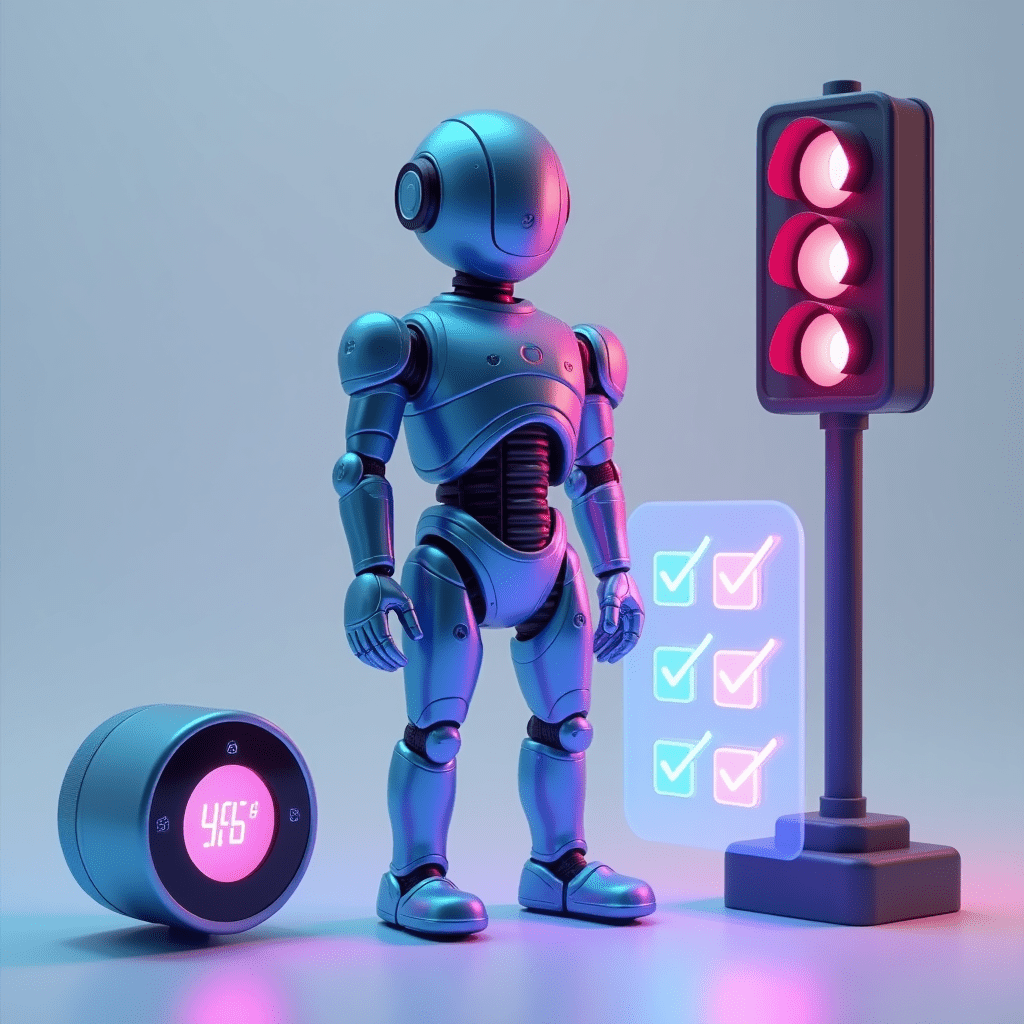Artificial Intelligence (AI) is changing the way we live and work. One exciting development in this field is the creation of AI agents. These smart software programs can interact with their surroundings, gather information, and use it to complete tasks on their own. Today, we’re going to explore a specific type of AI agent called a Reflex AI Agent.
Imagine having a helper that can make quick decisions based on what it sees right now. That’s what a Reflex AI Agent does! It’s like a digital friend that can react to things happening around it without needing to think too hard or remember past events.
Let’s break it down and learn more about these cool AI helpers!
What Makes a Reflex AI Agent Special?
A Reflex AI Agent is a simple yet powerful type of AI. Here’s what makes it unique:
- Quick Reactions: These agents are super fast! They don’t spend time thinking about the past or planning for the future. They just react to what’s happening right now.
- Rule-Based: They follow a set of rules that tell them what to do in different situations. It’s like having a list of “if this happens, do that” instructions.
- No Memory Needed: Unlike some other AI agents, Reflex AI Agents don’t need to remember what happened before. They only care about the current situation.
- Straightforward Decision-Making: These agents don’t try to predict outcomes or weigh different options. They simply follow their rules based on what they see.
How Does a Reflex AI Agent Work?
Think of a Reflex AI Agent as a simple robot with a checklist. Here’s how it operates:
- Sense: The agent uses its “senses” to gather information about its environment. This could be through cameras, microphones, or other sensors if it’s a physical robot. For software agents, it might be reading text or data inputs.
- Match: The agent looks at what it has sensed and tries to match it with one of its pre-programmed rules.
- Act: Once it finds a matching rule, the agent takes the action specified by that rule.
- Repeat: The agent keeps doing this over and over, always reacting to the current situation.
Real-Life Examples of Reflex AI Agents
Reflex AI Agents might sound simple, but they can be super helpful in many situations. Here are some real-world examples:
- Thermostat: A smart thermostat that adjusts the temperature based on the current room temperature is a perfect example of a Reflex AI Agent. If it’s too hot, it turns on the AC. If it’s too cold, it turns on the heat.
- Traffic Light Control: Some traffic lights use Reflex AI Agents to manage traffic flow. They react to the presence or absence of cars at an intersection to change the lights.
- Automated Customer Service: Simple chatbots that respond to specific keywords in customer queries are often Reflex AI Agents. They match the customer’s words to pre-set responses.
- Password Reset Systems: As mentioned earlier, a Reflex AI Agent can be used to reset passwords by detecting specific keywords in a user’s request.
- Basic Game Characters: In video games, some non-player characters (NPCs) use Reflex AI to react to the player’s actions. For example, an enemy that attacks when the player gets too close.
- Automatic Doors: The sensors on automatic doors that open when someone approaches are a form of Reflex AI Agent.
- Light Sensors: Outdoor lights that turn on when it gets dark are using a simple reflex mechanism.
Advantages of Reflex AI Agents
Reflex AI Agents might not be the most advanced AI out there, but they have some big advantages:
- Speed: Because they don’t need to think too much, Reflex AI Agents can react super fast. This is great for situations where quick responses are important.
- Simplicity: These agents are easy to create and understand. You don’t need to be an AI expert to set up a basic Reflex AI Agent.
- Predictability: Since they follow clear rules, you can usually predict how a Reflex AI Agent will behave in different situations.
- Low Resource Requirements: They don’t need lots of memory or processing power, so they can run on simple devices.
- Reliability: For straightforward tasks, Reflex AI Agents can be very reliable. They’ll always follow their rules consistently.
Limitations of Reflex AI Agents
While Reflex AI Agents are useful, they do have some limitations:
- Limited Flexibility: They can only handle situations that they have rules for. If something unexpected happens, they might not know what to do.
- No Learning: Unlike more advanced AI, Reflex AI Agents don’t learn from experience. They’ll make the same decisions every time, even if those decisions aren’t always the best.
- Lack of Context: These agents don’t consider past events or future consequences. They only react to the current situation.
- Complexity Challenges: For very complex environments or tasks, creating a complete set of rules can be difficult or impossible.
- No Optimization: Reflex AI Agents can’t improve their performance over time or find better ways to achieve goals.
When to Use Reflex AI Agents
Reflex AI Agents are best suited for:
- Simple, well-defined tasks
- Situations where quick reactions are more important than complex decision-making
- Environments that don’t change much or where changes are predictable
- Tasks where the right action is always the same for a given input
- Applications where reliability and consistency are key
Building Your Own Reflex AI Agent
Want to create your own Reflex AI Agent? Here’s a simple guide to get you started:
- Define the Task: Decide what you want your agent to do. Remember, it should be a straightforward task with clear rules.
- Identify Inputs: Figure out what information your agent needs to make decisions. These are the things it will “sense” from its environment.
- Create Rules: Write down a set of “if-then” rules. For each possible input, decide what action the agent should take.
- Choose a Platform: You can create a simple Reflex AI Agent using almost any programming language. Python is a popular choice for beginners.
- Implement the Agent: Write the code that will take in the inputs, check them against the rules, and perform the right actions.
- Test and Refine: Try out your agent in different situations and adjust the rules if needed.
def reflex_agent(temperature):
if temperature > 25:
return “Turn on AC”
elif temperature < 18:
return “Turn on heater”
else:
return “Do nothing”
# Test the agent
print(reflex_agent(30)) # Output: Turn on AC
print(reflex_agent(20)) # Output: Do nothing
print(reflex_agent(15)) # Output: Turn on heater
The Future of Reflex AI Agents
While more complex AI systems are getting a lot of attention, Reflex AI Agents still have an important role to play. They’re especially useful in situations where quick, predictable responses are needed without the overhead of more advanced AI.
In the future, we might see Reflex AI Agents:
- Integrated into more IoT devices for quick, local decision-making
- Used as a first line of response in larger AI systems
- Applied in new ways in fields like robotics and autonomous vehicles
- Combined with other AI techniques to create hybrid systems that are both fast and smart
Meanwhile, you can build your own no-code AI Agent below.
Conclusion
Reflex AI Agents might not be the flashiest or most complex type of AI, but they’re incredibly useful in many situations. They’re the quick-thinking, rule-following helpers that can make fast decisions based on what’s happening right now.
From smart home devices to traffic systems, these simple yet effective AI agents are all around us, making our lives a little bit easier. As we continue to develop more advanced AI systems, it’s worth remembering the power and simplicity of the humble Reflex AI Agent.
So next time you walk through an automatic door or your smart thermostat adjusts the temperature, give a little nod to the Reflex AI Agent working behind the scenes. They might be simple, but they’re an important part of the AI family, helping to build the smart, responsive world of tomorrow.
Want to learn more about AI?
Here are our recommendations:



